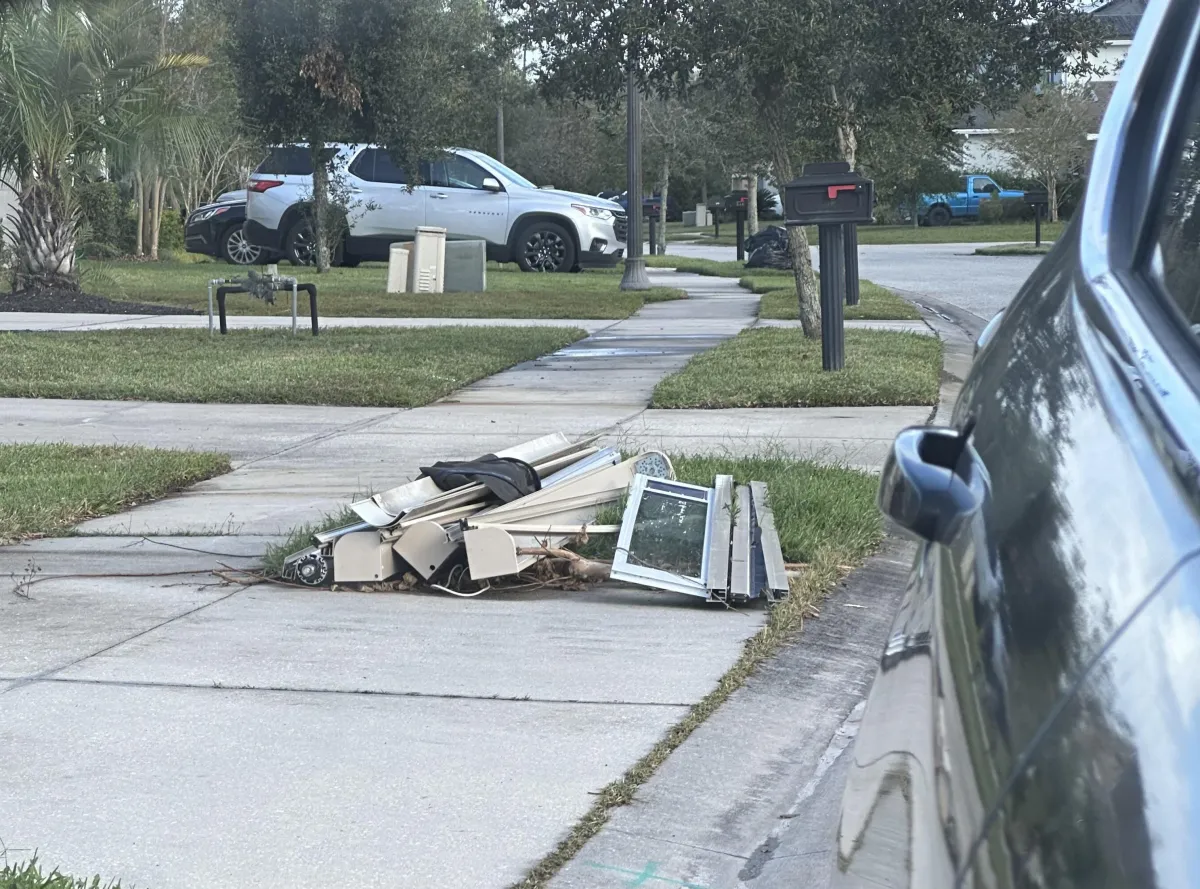FREEQUENTLY ASK QUESTIONS
Got Questions About Motorized Screens or Pergolas
Florida Living Outdoor has the answer. Below is a list of the most commonly asked question by homeowners in Florida Owners when trying to improve their outdoor spaces. Don't find it here in the FAQ. Talk with FLO. Simply fill out the chat widget.
What is your phone number?
Florida Living Outdoors’s phone number is (321)830-5660. Feel free to call anytime.
How do I schedule an appointment?
You can call the office or schedule a free 20-minute phone consultation online or schedule an appointment at the following calendar link https://floridalivingoutdoor.com/enhance-and-extend-outdoor-spaces/
Where is your office located?
Our office is located outside of Oviedo Florida, but we service the East Coast from New Smyrna Beach to Palm Coast and Central Florida from Oviedo to Mt Dora.
How do I get a quote?
You can call the office or schedule a free 20-minute phone consultation online or schedule an appointment at the following calendar link https://floridalivingoutdoor.com/enhance-and-extend-outdoor-spaces/
How long has Florida Living Outdoor been in business?
The owner of Florida Living Outdoors has been in the Outdoor Service industry for over 23 years. We are good at what we do.
What does Florida Living Outdoor do?
FL Outdoor specializes in protecting and creating smart and usable outdoor spaces that your family can enjoy.
Do you have a showroom?
No. 99.5% of its business is done in a homeowner’s backyard. We have sample demo kits and brochures to create an understanding of the product. If you move forward, we can order a life-like rendering.
Do the screens come in different shades and colors?
The housing units come in five colors: black, white, gray, bronze, and beige. The screen mesh color varies.
What is a rendering:
A rendering is a lifelike photo of your home with the desired product applied. They look real. It cool.
Is there a place where I can see motorized screens?
Yes. I’m sure we can talk to one of our clients and see theirs.
What is in an in-home consultation?
We simply need to schedule a time and one of our estimators will come out and meet with you. They will take detailed measurements and find out your wants, needs, and desires.e.
Are all motorized screens the same?
No. Motorized Screens serve different functions such as bug, solar, or storm protection.
What makes MagnaTrack so special?
That is easy. MagnaTrack uses free-floating inner tracks that release and reattach with opposite pull neodymium magnates. Combined with ballistic fiber the screens can stop a 2” x 4” traveling at fast speed.
What are the five basic components of a motorized screen?
The housing unit, track, and weight bar are the same.
How important is the screen mesh?
The screen mesh can be as simple as something for bugs or maybe you need a solar screen to block damaging UV rays. They even make screen mesh with ballistic fiber that is meant for high wind load zones.
Do I have to be home for the consultation or estimate?
Yes. You need to be there. These products are highly customizable, and we need to know your wants, needs, and desires.
Can I get a price or quote over the phone?
No. These products are highly customizable, and prices may vary depending on your needs, wants, and desires.
How much does motorized screens and pergolas cost?
The MagnaTrack system is highly customizable. Every project is different, Openings vary and the sub-strip of the unit is being attached.
How big of an opening can the motorized screen fit into?
MagnaTrack motorized screens can span 30’ and up to 20’ in height.
What is your lead time on motorized screens?
Start to finish currently they are 8 – 10 weeks.
Which is better MagnaTrack or Phantom?
Well, the simple answer is MagnaTrack Motorized screens. Not because I say so, but because MagnaTrack is not a zipper track-based system. MagnaTrack Possesses free-floating inner tracks held together by rare earth neodymium magnets. Simply put, it takes 500 Lbs. of pressure to dislodge the screen for the sidetracks. The competitors are only 30 lbs. Who needs service calls?
Do you carry hurricane screens?
Yes. We carry the Defender Series by MagnaTrack.
What type of motorized screens do you carry?
We carry the MagnaTrack Motorized screens Manufactured by Progressive Screens. The track system is the same, but the screen is configured to protect against, bugs, UV-Ray, rain, and storms.
Does the Hurricane Defender have a product approval code?
Yes. The Hurricane Defender has a product approval code. It has the Florida Product Approval #F30798
Are the Motorized Screens Miami Dade approved?
No. But the MagnaTrack Motorized Screen system meets or exceeds Miami Dade and Florida building code requirements for roll-down hurricane screens. Therefore, it can be installed in Miami-Dade.
Do install screen enclosures around pools or patios
No. We do not build or install screen enclosures around swimming pools. We specialize in protecting and creating outdoor spaces with a click of a button.
Do you replace screen pool enclosures or blowout screens.
No. We do not.
Do you repair other company’s motorize screens?
Nope. We are a MagnaTrack Dealer. We do not carry Phantom, Horizons, or Fintech. We carry the number one screen in the world. MagnaTrack.
What type of pergolas do you carry?
We carry and install Azenco-Outdoors pergolas. They are known for the louver roofs and anti-leak system aka R-blade. They also carry R-shades.
Are the Azenco-Outdoor pergolas Miami Dade approved?
Not Yet, but we are working on it. It looks like June.
What colors do the pergolas come in?
There are three colors to select from such as black, white, and grayish bronze.
How big are each pergola zone?
A louver roof zone can go 23 feet long by 15 wide. Solid roof pergolas can cover 22 feet by 22 feet.
HERE ARE A FEW THINGS THAT YOU MIGHT BE INTERESTED IN

Motorized Screens: How to Diagnose Hurricane Damage.
Question: "How do I fix my motorized screen? I left it down during the hurricane."
At Florida Living Outdoor, we understand motorized screens better than anyone. If your screen was damaged during the recent hurricane, you’re probably wondering what went wrong and how to fix it. This comprehensive guide will help you identify the six key components of your motorized screen system and diagnose common problems. Whether it's a misaligned track or a motor burnout, we’re here to assist you every step of the way. Let us help you restore your outdoor space and get your motorized screen back in top shape.
But before we dive in lets get a general overview of a motorized screen: A motorized screen system consists of six key components. The housing is the protective casing that holds the screen and motor. The roll tube is the part around which the screen wraps as it retracts. The motor powers the screen’s movement. The tracks guide the screen up and down, keeping it aligned. The weight bar at the bottom ensures smooth operation by maintaining tension. Finally, the screen mesh itself is the fabric that serves as the screen, varying in material based on its function—such as insect, solar, or hurricane-resistant.?
The Six Steps To Diagnose Problems With Your Motoried Screen:
1. How to Identifying Damage Motorized Screen Housing Units
If the motorized screen or housing is improperly installed or knocked out of alignment during a hurricane, it can cause various issues. To fix this, you first need to diagnose the problem. If the screen won’t move but you hear the motor, it likely needs a rewrap. If the screen moves but there are loud clunking noises, check for movement in the hood—this could indicate a bent roll tube. If the weight bar moves unevenly, the roll tube may be warped. In either case, it’s best to seek a professional for repairs.
Why does this occur? Here are a few possible reasons: An uneven hood is often the result of improper installation. The installation team likely used a traditional level instead of a laser line level to ensure precise alignment. Another possibility is that the incorrect type or amount of fasteners was used, leading to improper support. Always ensure professionals follow manufacturer guidelines for installation.
If you're experiencing any issues with your motorized screen and need expert assistance, feel free to contact us through our service form here. We're happy to help!
2. Identifying Warped roll tubes in Motorized Screen.
A bent or warped roll tube can cause various issues with your motorized screen, such as clunking noises, uneven retraction, or sagging. Diagnosing roll tube problems typically requires removing the housing hood for a closer inspection, which is best handled by a professional due to safety concerns, especially for large screens. However, homeowners can assist by paying attention to when and where the noise occurs, recording video of the screen in action, and identifying whether the noise is centralized (indicating a bent tube) or occurs throughout (suggesting a poor connection between the motor and mounting bracket).
Why does this occur? One of the most common causes of a bent or warped roll tube is wind pressure stress or improper material strength. To diagnose this, a professional will remove the hood and measure the distance from the roll tube to the top of the housing at three points: left, center, and right. Ideally, these measurements should be consistent, with up to a 1/8-inch variation being acceptable. Visible sagging may also indicate a bent tube, but precise measurements will give the most accurate diagnosis.

3. Identifying issues with the Motors in a Motorized Screen.
Motors used in outdoor motorized screens are built to be durable, but they are not immune to problems. To diagnose motor issues, start by using your senses—listen for grinding or straining sounds, smell for burnt plastic or chemical odors, and feel for excessive heat near the motor. If you detect these signs, turn off the screen at the service switch immediately and call a professional. If the screen struggles only when moving downward, the problem likely lies in the tracks, not the motor.
Motor problems often occur when the motor is overworked due to friction from the screen or misalignment of the weight bar. This extra strain can cause the motor to overheat, leading to operational failure or burnout. In addition, jerking or stuttering screen movements could be signs that the motor is struggling to perform. Pay attention to any unusual behaviors while the motor is running, as these can signal underlying issues that need professional attention.
Water damage is another common culprit for motor issues, especially after storms. Improperly sealed or unlooped power cords can allow rainwater to run down the line and seep into the motor housing. This can cause short circuits or overheating, leading to a dead motor. If your motor stops working immediately after a storm, this could be the cause. It’s crucial to ensure the power cord is correctly looped and sealed during installation to prevent water from entering the motor in the future.
But, before you pronounce the motor dead. It could be in sleep mode. Want to learn how to wake up a Gaposa Motor watch the following instructional video on Florida Living Outdoor's YouTube Channel.
4. Diagnosing Damage and Loose Tracks on Motorized Screens.
Damaged or misaligned tracks can cause a variety of issues with your motorized screen, from jamming to uneven movement of the weight bar. You can easily diagnose loose or compromised tracks by applying gentle pressure to them. If the tracks can be moved or feel unstable, the fasteners may have become loose or degraded. This often occurs due to the wrong fastener type or improper installation depth. According to Progressive Screens, fasteners should be placed every 20 inches, embedded at least 1 3/4" into concrete and 2 3/4" into wood, using stainless steel anchors in marine environments.
Why does this occur? Track issues usually stem from fasteners losing their hold due to poor embedment or using the wrong materials. Over time, weather conditions, such as wind and rain, can also loosen the tracks, especially if the wrong fasteners were used during installation. Homeowners can attempt to re-secure loose tracks using a power drill with a 1/4" nut driver, but care must be taken not to overtighten, as this can cause the fasteners to lose grip. For long-term solutions, it's often wise to consult a professional.
If you want to advoide track issues, MagnaTrack by Progressive Screens uses a patented self-correcting tension system, ensuring the screen stays aligned and functional even under high wind conditions. Their Defender Hurricane Screens are designed to remain secure and functional during extreme weather, minimizing track-related problems. Other Systems like Fenetex Hurricane Screens Fenetex Hurricane Screens are built with high-grade materials designed to meet strict building codes, including high-wind zones, making them less prone to track damage.
It’s important to note that not all motorized screen systems are designed for hurricane conditions. For example, Phantom Screens, Mistral Shield, and New Horizons are not built for hurricane resistance and should be rolled up before a storm to prevent damage.
5. Diagnosing Damage Weight Bars on Motorized Screens.
Weight bar issues can cause significant problems with your motorized screen, such as jamming or uneven movement. To check for damage, raise the screen above head level and look up at the weight bar—if it appears bowed, you'll need to contact the installation company for a replacement. Additionally, inspect the ends of the weight bar where it meets the tracks and ensure the probe guides are still attached. You'll often see a small black rectangle pinching the screen; the weight bar is likely compromised if it's missing or damaged.
Why does this occur? A bowed weight bar can result from stress over time, especially after heavy use or storms. If the probe guides detach, the screen may not move smoothly within the tracks, exacerbating the problem. There is no temporary fix—leave the screen in its current position and contact a professional for replacement. You can provide measurements from the back or inside edges of the tracks to assist the installer. Preventive maintenance is simple: Call for service immediately if you see anything loose.
If you're experiencing any issues with your motorized screen and need expert assistance, feel free to contact us through our service form here. We're happy to help!
6. Diagnosing Damage Screen Mesh on Motorized Screens.
The screen mesh can be one of the most vulnerable parts of a motorized screen, especially after severe weather. Damage is often visible, manifesting as rips or tears along the edges where the side weld attaches the zipper or kedar system to the tracks. You may also notice missing parts of the screen or punctures from debris during storms. For screens with stitched seams, look for loose threads that indicate deterioration. Unfortunately, once these issues occur, there's no quick fix—replacing the screen is the only option.
Why does this occur? Screen mesh damage can be attributed to various factors, including the screen type and external conditions. Insect screens, for example, are more fragile and prone to punctures, especially if you have pets or active children. Solar screens tend to be more durable due to polyester threads coated with vinyl, making them better suited for high-use areas. Hurricane screens, such as those made with ballistic fibers like OmegaTex, offer superior resistance to storm debris. Choosing the right screen for your environment is crucial for avoiding frequent repairs or replacements.
What if I don't know who the manufacture is?
If your motorized screens were damaged, contact the manufacturer. Understand that the screen size and mesh within motorized screens are often manufacture-specific. Below are the links to the most popular Manufacture of Motorized Screens:
Progressive Screens:
Fenetex
SunPro
Phantom
Mirage Screens System:
Genius Screens
SunSetter
When it comes to motorized screen systems, choosing the right installation company and product is crucial for long-term durability and performance. At Florida Living Outdoor, we not only specialize in identifying and repairing issues but also in installing the best systems on the market, like MagnaTrack. Known for its patented self-correcting technology, MagnaTrack ensures that your screen withstands even the harshest conditions, including hurricanes. Don’t settle for less—trust the experts at Florida Living Outdoor to provide the highest quality solutions that last.
If you need help with your motorized screen, contact us here.
FLO... CREATING LUXURY OUTDOOR
Work requiring DBPR licensure in partnership with CGC1532839
MOTORIZED SCREENS
Warranty
FENCE
Horizontal Fencing
Greenwood Fence
PERGOLAS
Azenco-Outdoors
R-Blade Motorized Louver Roofs
R-Shade Insulated Roof
COMPANY INFO
About FL Outdoors
FL Outdoor News
Service Area
FAQ
IMPORTANT INFO
SERVICE AREA CENTRAL FLORIDA
Mount Dora
Longwood
Maitland
Seminole County
Windermere
Lake Nona
SERVICE AREA PALM BEACH
Boca
Boynton Beach
Delray Beach
Jupiter
SERVICE AREA BROWARD COUNTY
Fort Lauderdale
Deerfield Beach
Light House Point
Plantation
South West Ranches




Facebook
Instagram
X
LinkedIn
Youtube
TikTok
Pinterest